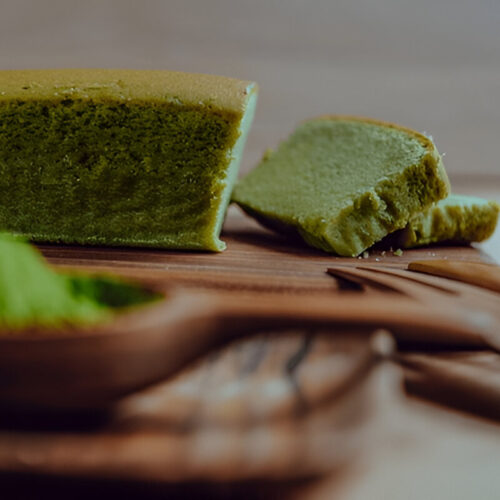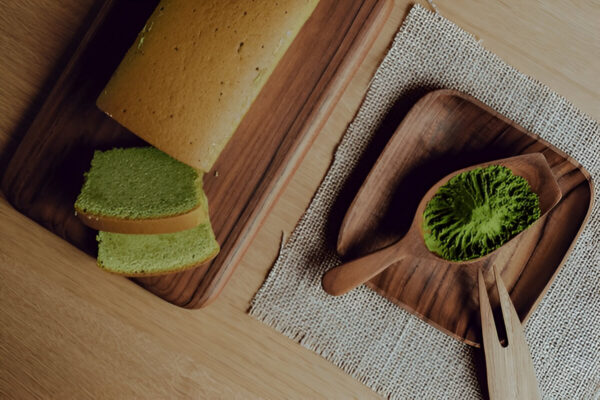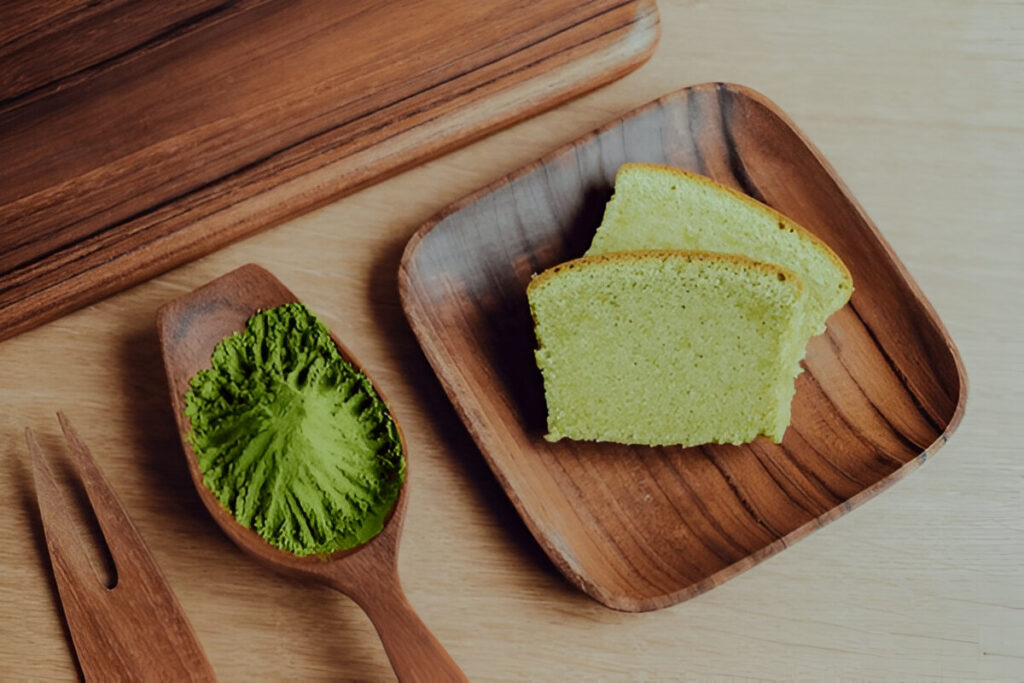Asian Desserts Series: The Irresistible Matcha Cake
Asian desserts are a delightful mix of flavors, textures, and cultural heritage. From the creamy sweetness of mango sticky rice to the delicate chewiness of mochi, these treats capture the heart and soul of Asian cuisine. Among these treasures, matcha stands out as a star ingredient, cherished not only for its vibrant green hue but also for its unique, earthy flavor.
Matcha, a finely ground green tea powder, has deep roots in Japanese tea ceremonies and has become a favorite in modern desserts. Its distinct taste and health benefits make it a popular choice for creating sweets that are both indulgent and nourishing.
In this post, we’re diving into the world of matcha cake, a delicious fusion of traditional Japanese flavors and classic baking techniques. Whether you’re a seasoned baker or a curious beginner, this guide will help you craft a matcha cake that’s moist, flavorful, and perfect for any occasion. Let’s get started!
What is Matcha and Why It’s Perfect for Desserts
What is Matcha?
Matcha is a finely ground powder made from specially grown green tea leaves. Unlike regular green tea, where leaves are steeped in water and discarded, matcha involves consuming the entire leaf. This unique process delivers a concentrated dose of antioxidants, vitamins, and minerals. Originally used in traditional Japanese tea ceremonies, matcha has since become a staple in modern culinary creations worldwide.
Matcha’s Flavor Profile
Matcha’s flavor is a harmonious balance of earthy, slightly bitter, and subtly sweet notes. Its umami-rich taste is what sets it apart from other asian desserts ingredients, adding depth and complexity to every bite. The vibrant green color not only looks stunning but also signals its freshness and quality.
Why Matcha Works Well in Desserts
Matcha’s versatility makes it a perfect match for asian desserts. Here’s why:
- Unique flavor: Its distinct taste complements sweet ingredients like cream, chocolate, and fruits.
- Vibrant color: The bright green hue adds a visual wow factor to cakes, pastries, and more.
- Health benefits: Packed with antioxidants, matcha lets you enjoy indulgent treats with a touch of wellness.
- Texture enhancement: Matcha’s fine powder blends seamlessly into batters and fillings, ensuring smooth and even flavors.
Cultural and Culinary Significance of Matcha in Asian Desserts
Matcha in Japanese Tea Ceremonies
Matcha has been an integral part of Japanese culture for centuries, especially in the traditional Japanese tea ceremony (chanoyu). This ritual, which dates back to the 9th century, centers around the preparation and consumption of powdered green tea in a highly ceremonial and mindful manner. The tea is whisked into a frothy, vibrant green drink, often served with traditional sweets to balance its slightly bitter flavor. This deep-rooted cultural significance elevates matcha beyond just a flavor—it’s a symbol of serenity, harmony, and respect.
Modern Uses of Matcha in asian desserts
Over the years, matcha has transcended its role in tea ceremonies and found a home in many modern Asian desserts. Its distinctive taste and vibrant color make it a favorite in a variety of sweets. From traditional treats like mochi (sweet rice cakes) and dorayaki (red bean pancakes) to contemporary creations like matcha lattes and cakes, matcha adds a unique twist to both traditional and fusion desserts. Its versatility allows it to pair well with other popular Asian ingredients such as red bean paste, coconut, and sesame, enhancing the overall flavor profile of desserts.
Matcha as a Trend in Global Cuisine
In recent years, matcha has gained global recognition, especially in the culinary world, where it’s been embraced by chefs and home bakers alike. Its increasing popularity is not only because of its flavor but also due to its health benefits, including its high antioxidant content. Matcha is now featured in a wide range of global desserts, from matcha-flavored ice creams and pastries to chocolate and even savory dishes. This global fascination with matcha has helped it become a trending ingredient, transcending cultural boundaries and making its way into homes and restaurants around the world.
The Health Benefits of Matcha
Beyond its culinary uses, matcha is known for its health benefits. It’s packed with antioxidants, particularly catechins, which help fight free radicals and may contribute to better heart health. The presence of L-theanine, an amino acid found in matcha, promotes relaxation without drowsiness, which makes it an ideal ingredient for stress-reducing desserts. Whether in a cake or a cup of matcha tea, these health benefits add a layer of mindfulness to the indulgence, making matcha desserts not only delicious but also a bit of a treat for the body and mind.

Asian Desserts Series: The Irresistible Matcha Cake
Equipment
- 1 9-inch round cake pan greased and lined with parchment paper
- 1 Mixing bowls
- 1 Sifter or sifting matcha powder and flour
- 1 Hand whisk or electric hand mixer
- 1 Spatula for scraping down the sides of the bowl
- 1 Measuring cups and spoons
Ingredients
Dry Ingredients
- 1 ½ cups cake flour 190g
- 2 tbsp matcha powder 14g
- 1 tsp baking powder
- ¼ tsp salt
Wet Ingredients
- 3 large eggs room temperature
- ¾ cup granulated sugar 150g
- ½ cup whole milk 120ml, room temperature
- ⅓ cup unsalted butter 75g, melted and cooled
- 1 tsp vanilla extract optional
Optional Add-Ins
- ½ cup white chocolate chips 90g
- ¼ cup red bean paste 60g, for filling or topping
Instructions
Step 1: Prepare the Oven and Cake Pan
- Preheat your oven to 350°F (175°C). Grease your 9-inch round cake pan with butter or oil, then line it with parchment paper for easy removal of the cake once baked.
Step 2: Sift the Dry Ingredients
- In a large mixing bowl, sift together:1 ½ cups (190g) of cake flour2 tbsp (14g) of matcha powder1 tsp of baking powder¼ tsp of salt
- This step ensures the dry ingredients are evenly combined and prevents clumps in the matcha powder.
Step 3: Beat the Wet Ingredients
- In another bowl, whisk together the following ingredients until smooth:3 large eggs¾ cup (150g) of granulated sugar½ cup (120ml) of whole milk1 tsp of vanilla extract (optional)
- You can use a hand whisk or an electric mixer on medium speed. Beat until the mixture is slightly fluffy and pale in color.
Step 4: Combine Wet and Dry Ingredients
- Slowly add the sifted dry ingredients into the wet mixture in batches. Gently fold the mixture together using a spatula or a whisk. Be careful not to overmix; stop as soon as the batter is smooth and well combined.
Step 5: Add Butter
- Pour in ⅓ cup (75g) of melted and cooled unsalted butter. Gently fold it into the batter until it is fully incorporated. If you’re using white chocolate chips or red bean paste, fold them in at this stage.
Step 6: Bake the Cake
- Pour the batter into the prepared cake pan and spread it out evenly with a spatula. Bake in the preheated oven for 25-30 minutes, or until a toothpick inserted into the center of the cake comes out clean. Keep an eye on the cake to prevent over-baking.
Step 7: Cool the Cake
- Allow the cake to cool in the pan for about 10 minutes, then transfer it to a cooling rack to cool completely. This helps maintain its soft texture and prevents it from becoming soggy.
Step 8: Serve and Enjoy
- Once the cake is fully cooled, slice and serve! You can enjoy it as is, or top with whipped cream, fresh fruits, or a dusting of matcha powder for an extra touch of flavor.
Notes
Recommended Matcha Brands
Using good-quality matcha is essential for the best results. Look for brands like:- Ippodo Tea
- MatchaBar
- Kirkland Japanese Matcha (budget-friendly and widely available).
High-quality matcha should have a bright green color and a fresh, grassy aroma.
From its spiritual roots in Japan to its modern-day use in a variety of sweet and savory dishes, matcha holds a significant place in both the cultural and culinary landscape of Asia. Its unique flavor and vibrant color make it a beloved ingredient in desserts around the world. As the global fascination with matcha continues to grow, its versatility ensures that it will remain an iconic ingredient for generations to come.


